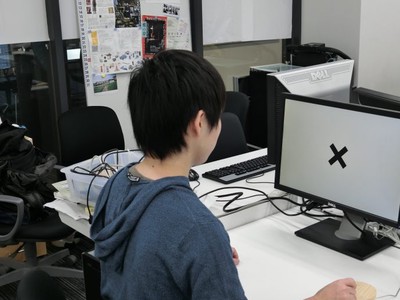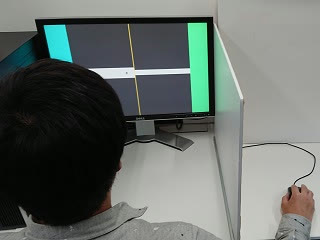Self-attribution is known to arise primarily from the consistency between visual and somatosensory information, and from consistency between visual feedback and predictions based on motor commands. However, it has remained unclear which type of congruence plays the primary role during voluntary movements.
In this study, we conducted a user study that distinguished proprioceptive information from predictions based on motor commands by displaying modified images of the subjects’ hands at various rotation angles, thereby introducing conflict between visual and proprioceptive information. The hand motion of the subjects was restricted so that they could predict the visual motion of the images of their hands through motor commands even while the images were rotated. The results indicate that motion prediction plays a primary role in self-attribution, and the strength of this effect depends on the motion pattern and the appearance of the hand images.
In interactive systems, especially in VR environments, it is important to design user interfaces that facilitate motor prediction. Our findings suggest that self-attribution during active movement is strongly influenced by the consistency between visual feedback and motor prediction, rather than by somatosensory information alone.


Pseudo-haptics refers to the phenomenon where users perceive a force that is not physically present, often due to mismatches between visual and force feedback. However, transformed force feedback can be interpreted both as an external force and as the result of voluntary movement. In our study, we hypothesized that pseudo-haptics can also arise from discrepancies between motor prediction and visually perceived movement outcomes, even when visual and force information are consistent. We conducted experiments in which motor contagion was induced, creating a difference between motor prediction and movement outcome while maintaining consistency between visual and force feedback. As a result, participants perceived a force in the same direction as the motor contagion. These findings indicate that discrepancies between motor prediction and movement outcome are an important factor in the occurrence of pseudo-haptics.

Steering task in progress

